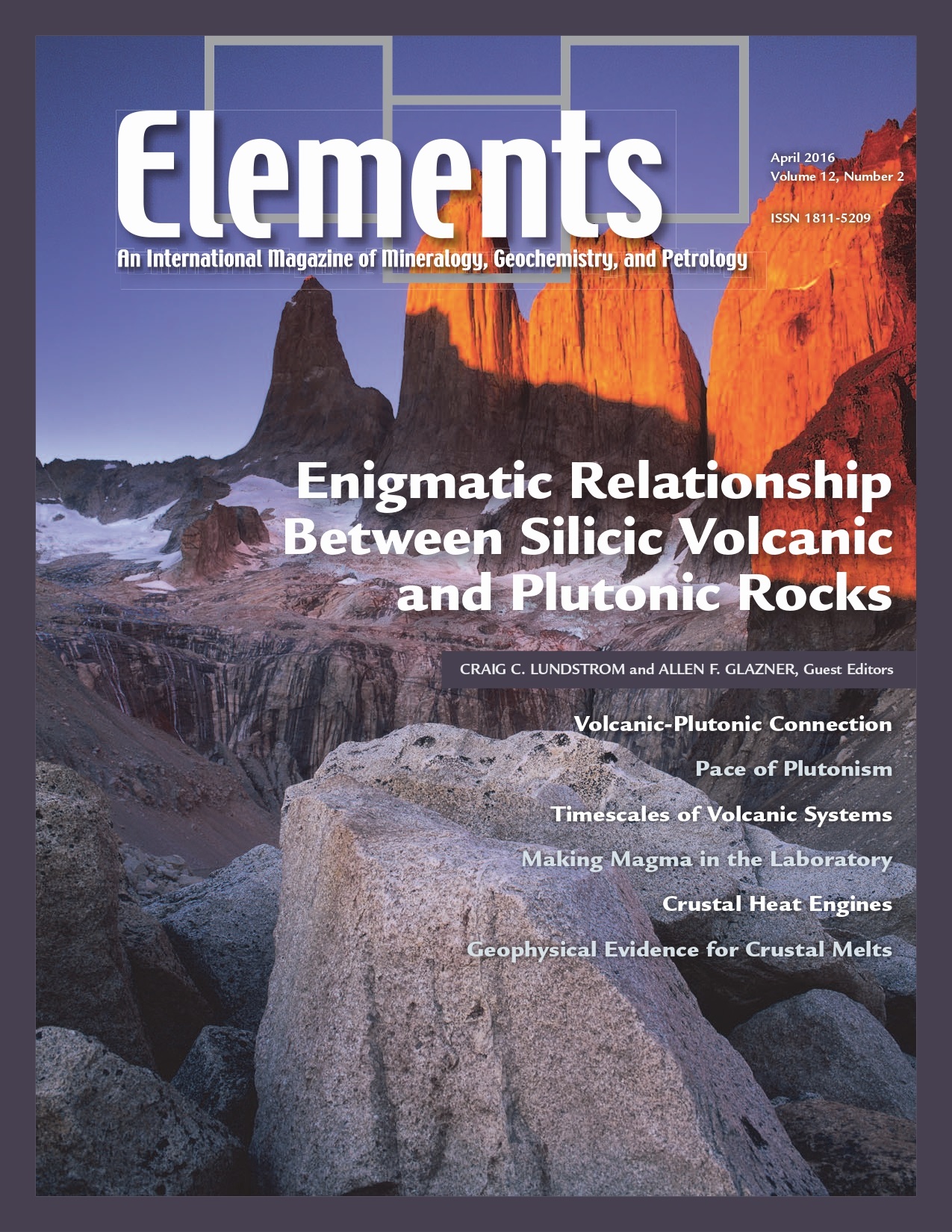
Geomicrobiology And Microbial Geochemistry, December 2015, Vol. 11, No. 6
June 28, 2024
Origins Of Life: Transition From Geochemistry To Biogeochemistry, December 2016, Vol. 12, No. 6
June 28, 2024Enigmatic Relationship Between Silicic Volcanic And Plutonic Rocks, April 2016, Vol. 12, No. 2
$20.00
The relationship between silicic volcanic and plutonic rocks has long puzzled geologists. Although the compositional evolution for volcanic and plutonic rock suites are virtually identical, there is much debate whether rhyolites form as melt extracted from granite plutons or whether the two rock types reflect wholly separate origins.
Enigmatic Relationship Between Silicic Volcanic And Plutonic Rocks
April 2016, Vol. 12, No. 2
The relationship between silicic volcanic and plutonic rocks has long puzzled geologists. Although the compositional evolution for volcanic and plutonic rock suites are virtually identical, there is much debate whether rhyolites form as melt extracted from granite plutons or whether the two rock types reflect wholly separate origins. This issue discusses the broad set of observations from petrology, geochronology, thermal modeling, geophysical techniques, and geochemistry that lead to contradictory interpretations and no simple description for the relationship. Discerning how silicic volcanic and plutonic rocks are connected will affect important Earth science questions such as “how is continental crust formed?” and “can we predict supereruptions?”
Why You’ll Love Elements Magazine:
- Expert Contributors: Articles written by renowned researchers in the field of geoscience.
- Engaging Content: Join a community of readers who are passionate about Elements.
- Exceptional Quality: Each issue is printed on high-quality paper with stunning visuals and detailed illustrations that bring complex scientific concepts to life.
Order your copy of the April 2016 issue of Elements magazine today and delve into the enigmatic relationship between silicic volcanic and plutonic rocks.
Related products
-
Large Igneous Provinces: Origin And Environmental Consequences, December 2005, Vol. 1, No. 5
$20.00Large igneous provinces record major outpourings of igneous rocks, both on the continents and in ocean basins. Their origin is still vigorously disputed, with models invoking mantle plumes, thermal effects of the lithosphere, and meteorite impacts.
-
Fluids in Planetary Systems, January 2005, Vol. 1, No. 1
$20.00Water and other geofluids play an important role in the geochemical and rheological evolution of the Earth and other bodies in the solar system. These fluids are responsible for the formation of hydrothermal mineral deposits, affect eruption behavior in volcanic systems and the geophysical properties of the mantle, and significantly affect the way in which rocks deform and fracture.
-
Phosphates And Global Sustainability, April 2008, Vol. 4, No. 2
$20.00Phosphorus is a unique element: it is essential to the existence of all living forms, and as such controls biological productivity in many terrestrial and marine environments; but when in excess, it leads to uncontrollable biological growth and water-quality problems. This has become a common environmental issue, resulting from our careless use of phosphorus in agriculture, yet phosphate ore deposits, from which fertilizers are produced, are a finite natural resource.




